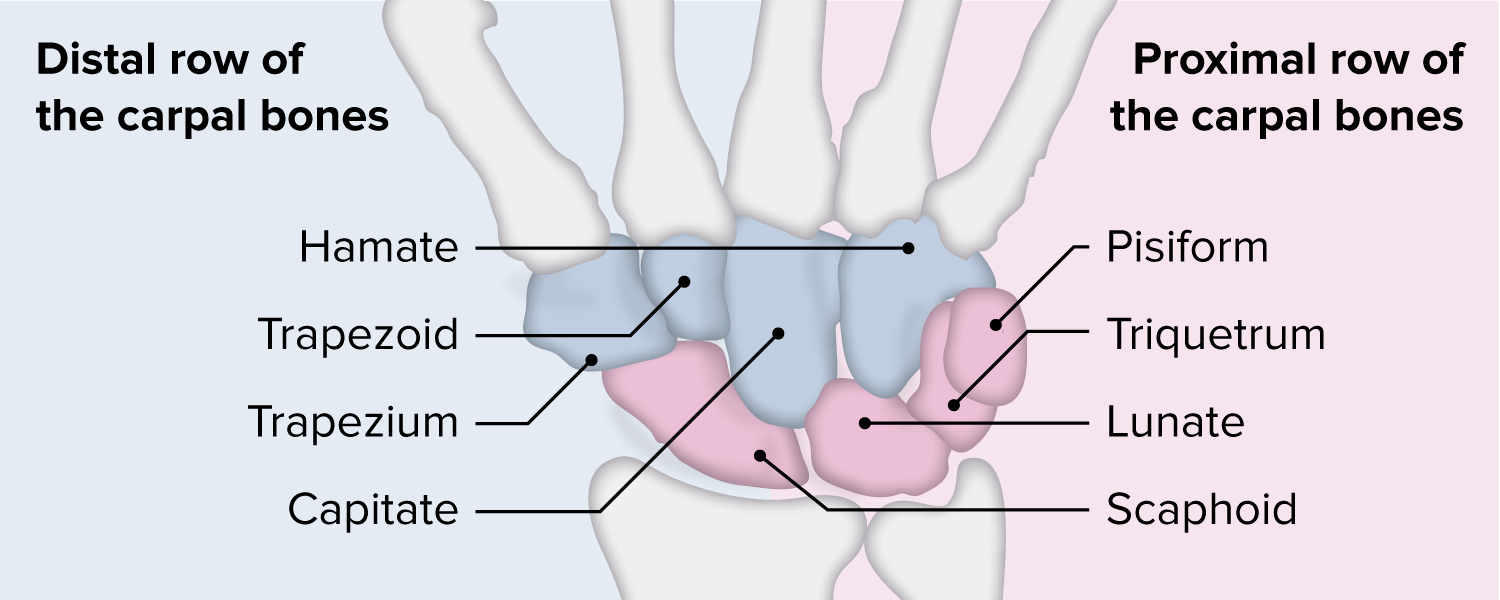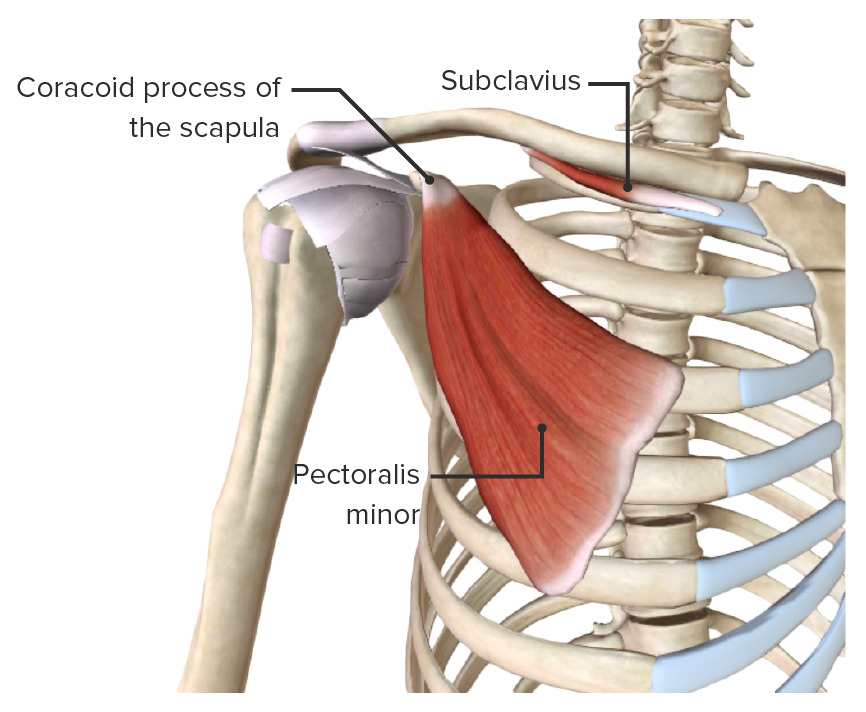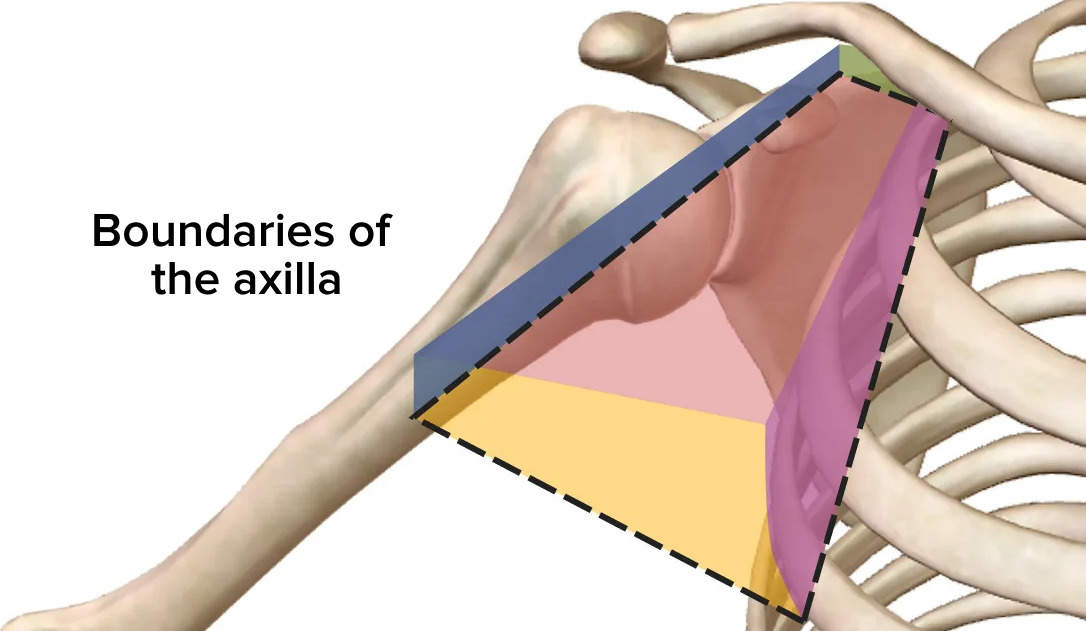Playlist
Show Playlist
Hide Playlist
Overview of the Upper Limb
00:01 we do the thorax and axilla as well. The shoulder joint, a lot of theory. I haven't cover it but you need to just go through the slides when you have a minute. You can get questions on the rotator cuff, shoulder joint. You need to understand the glenoid labrum. From the superior part, you have the long head of biceps. From the inferior side, you have the long head of triceps. So, that is the theory. The four muscles of the rotator cuff, you need to know. Painful arc syndrome. Painful arc syndrome is when your supraspinatus tendon gets caught under the acromion process. So supraspinatus initiates the first 15 degrees of abduction. Then the deltoid takes over. Until here is deltoid, and how does this movement happen? Which muscle is working? Supraspinatus deltoid -- Trapezium? Yes, very good, and a bit more? You’re right. 01:23 You’re on the right track. Trapezium, it’s by the rotation of the scapula. 01:27 Lattisimus? That doesn’t work. Trapezium is mainly. 01:32 Beyond this, this gives the scapula rotation rotating on the thorax and this trapezium is pulling it up. It’s also aided by the rhomboids. This is your action of the shoulder. 01:43 But if we have a supraspinatus tendinitis or painful arc syndrome, when it comes to 60 degrees, the supraspinatus tendon gets caught under the acromion process. 01:55 It’s painful, painful, painful all the way up to 120. Now, when you push it more, the tendon moves off the acromion process and it becomes pain free. So that is your painful arc syndrome, 60 to 120 degrees. Brachial plexus, you can get this in any book. 02:21 So that’s why I didn’t go through this, but when you’re revising, you’ll be able to get all this information for you to understand axillary artery, what is on the lateral side, what is on the medial side branches of the lateral cord, posterior cord, branches of the medial cord. Just take a minute for you to orient yourself. You have a lateral cord of the brachial plexus there, axillary artery, medial cord of the brachial plexus, and then you have the ulnar nerve here, brachial artery. 03:09 One anatomical relation they’ll ask you in the exam is, if you go back to the cubital fossa, the most medial structure is the median nerve. Next to that is the brachial artery, but if you go up the arm, if you go up here, it's other way around. So the brachial artery is medial, median nerve is lateral. As it comes to the distal one-third of the arm, they cross over so that the median nerve comes most medial. So that is another anatomic relation. 03:45 Okay. Dermatomes, I’m sure you know this, but I think I have a picture on that. Okay. 03:56 So, you know that is C5, C6. C6 is your thumb and half of the index finger. C7 is middle finger. 04:06 C8 is mainly ring and little. T1, T2. So, C5 to T2 in the limb. If you look here, it will be T3, T4, T5, T6, T7, T8, T9, umbilicus is T10. T11, T12, L1. C3 and C4, where do the C3 and C4 come from? Cervical plexus. 04:40 Very good, yes. This is what we’ll be discussing after the break. When we discuss the head and neck, we’ll cover the C3, C4. So as I said, the brachial plexus is starting from C5. So that’s why the entire arm is C5 to T1, the inside part is T2. Okay. Cubital fossa, that’s a schematic head of presentation. Laterally, you have the brachioradialis. Medially, you have the pronator teres. So, this is the left and the right cubital fossa. Brachioradialis. 05:20 Pronator teres. Median nerve. Brachial artery. Cephalic vein. That’s the tendon of biceps. 05:28 So if you look at, that’s your left arm, medial to lateral, pronator teres, median nerve, brachial artery, biceps, brachioradialis. Okay. There is nothing new. This is just a theory of what we've discussed, their boundaries, contents. Carpal tunnel, we’ve been through it in detail, but this is cross-section. This is all for further understanding and revising if you have the time. But as I said, if you just revise what we have covered this morning, that should be sufficient for your exam.
About the Lecture
The lecture Overview of the Upper Limb by Stuart Enoch, PhD is from the course Musculoskeletal - Upper Limb.
Included Quiz Questions
What structure does NOT traverse the sternocleidomastoid muscle?
- The accessory nerve
- The external jugular vein
- The great auricular nerve
- The transverse cervical nerve
A 47-year-old male was involved in an accident and fractured his humerus. Upon inspection of his arm, he complained of numbness and tingling as well as inability to extend his hand. Which of the following cords of the brachial plexus is associated with the most likely damaged nerve?
- Posterior cord
- Anterior cord
- Superior cord
- Inferior cord
- Middle cord
A tennis player presents with pain and weakness in his left upper extremity for the past 3 months. He complains of numbness and tingling that developed slowly. Physical exam shows pallor and coolness to the hypertrophied muscles of the upper extremity. Further testing shows damage to the anterior and middle scalene muscles, occluding a large vessel. Which artery is most likely involved?
- Subclavian artery
- Brachial artery
- Brachiocephalic artery
- Supraspinatus artery
Which nerve of the brachial plexus Innervates the pectoralis major and pectoralis minor muscles?
- Medial pectoral nerve
- Posterior pectoral nerve
- Anterior pectoral nerve
- Median pectoral nerve
Which of the following nerves, if compressed, could lead to crutch palsy?
- Radial nerve
- Clavicular nerve
- Ulnar nerve
- Median nerve
A 60-year-old female presents to the office with the complaint of left shoulder pain. History reveals that the pain worsened over the last month and is worse with reaching overhead. There is pain with abduction of the right shoulder and internal rotation. X-rays of the shoulder are within normal limits. What is the most likely diagnosis?
- Rotator cuff tear
- Bicipital tendonitis
- Radial nerve tear
- Arthritis
A 52-year-old male was bit by a stray dog. X-rays performed were within normal limits. The patient later complained of pain, numbness and tingling at the first three digits of his hand. Which nerve is most likely to be affected by the injury?
- Median nerve
- Radial nerve
- Ulnar nerve
- Medial nerve
Which of the following statements about the brachial plexus is true?
- The lateral cord continues as the musculocutaneous nerve
- The medial cord continues as the musculocutaneous nerve
- The lateral cord continues as the axillary nerve
- The nerve to subclavius is a branch of the C2 nerve root
A 70-year-old farmer was digging his crops when he suddenly felt weak and heard a “snap” in his upper extremity. He is unable to maintain grip strength and a buldge could be palpated in his mid upper arm. Which is the most likely reason for this finding?
- Biceps tendon rupture
- Brachioradiallis rupture
- Triceps rupture
- Humerus fracture
Motorcyclists most commonly present with a hand injury leading to flexion of the 4th and 5th digits due to ulnar abnormalities. Which nerve roots most likely affected in this condition known as “claw hand”?
- C8 -T1
- T1-T8
- C5-C6
- C4-C8
Which nerve is most likely to be injured in a patient who cannot abduct his fingers after a laceration from a cooking knife?
- Ulnar nerve
- Musculocutaneous nerve
- Radial nerve
- Median nerve
A 21-year-old medical student was injured in the medial aspect of his upper limb, resulting in an inability to adduct his arm. Which muscles are most likely to be injured?
- Teres major, pectorlis major, latismus dorsi
- Teres minor, pectoralis major, latismus dorsi
- Teres major, pectoralis minor, latismus dorsi
- Teres minor, pectoralis major, teres major
Following a car accident, a patient suffers from cervical spondylosis at C2-C3. Which nerve root is most likely to be affected?
- C3
- C2
- C4
- C1
Which of the following muscles if injured could result in difficulty of internal rotation?
- Subscapularis muscle
- Infraspinatus muscle
- Supraspinatus muscle
- Teres major
- Deltoid
A 46-year-old female housekeeper presented to clinic with weakness and pain in her shoulder. Neer's sign and Hawkins-Kennedy tests were positive. The doctor suggested steroid injections to alleviate symptoms temporarily. X-rays show joint calcification. Which of the following is most likely responsible for such symptoms?
- Shoulder impingement
- Fractured humerus
- Painful arm syndrome
- Subscapularis tear
What is the most likely location for the supraspinatus to be caught, resulting in painful arc syndrome?
- Acromion process
- Clavicle
- Coracoid process
- Humerus
A 4-year-old child accidentally hammers his own hand and now complains of numbness and tingling in his middle finger. Which nerve root is most likely affected?
- C7
- T1
- C5
- C6
- C8
A 21-year-old female computer analyst comes into the office complaining of paresthesias, pain and weakness for the past 3 years. It is worse with wrist flexion and extension. The patient has a positive Tinel’s sign. Which nerve is most likely affected based on above findings?
- Median nerve
- Medial nerve
- Ulnar nerve
- Radial nerve
Which of the following, when released, relieves the symptoms associated with carpal tunnel syndrome?
- Transverse carpal ligament
- Vertical carpal ligament
- Ulnar nerve
- Radial nerve
Which of the following comprises the cubital fossa in order of most medial to most lateral?
- Median nerve, brachial artery, biceps brachii tendon, radial nerve
- Brachial artery, biceps brachii tendon, radial nerve, median nerve
- Brachial artery, median nerve, biceps brachii tendon, radial nerve
- Brachial artery, radial nerve, median nerve
Which of the following cords of the brachial plexus contains the following nerves: Musculocutaneous nerve, lateral pectoral nerve, and the lateral root of the median nerve?
- Lateral cord
- Posterior
- Medial
- Anterior
What is the order in which the anterior, middle and posterior scalenes is attached?
- 1st rib, 1st rib, 2nd rib
- 2nd rib, 1st rib, 1st rib
- 1st rib, 2nd rib, 3rd rib
- 2nd rib, 2nd rib, 3rd rib
Which nerve innervating the biceps brachii gives the arm the ability to supinate?
- Musculocutaneous nerve
- Medial nerve
- Ulnar nerve
- Radial nerve
Newborns born with hyperabduction and shoulder dystocia are more prone to develop upper brachial plexus injuries. Which nerve roots and nerves would be affected in such complications?
- C5-C6, suprascapular nerve, musculocutaneous nerve, and the axillary nerve.
- C4-C5, suprascapular nerve, median nerve, and the axillary nerve.
- C5-C6, supraspinatus nerve, musculocutaneous nerve, and the axillary nerve.
- C8-T1, suprascapular nerve, musculocutaneous nerve, and the axillary nerve.
Which muscles make up the posterior rotator cuff?
- Supraspinatus, infraspinatus, teres minor
- Subscapularis, infraspinatus, teres major
- Subscapularis, deltoid, teres major
- Supraspinatus, deltoid, teres minor
Customer reviews
5,0 of 5 stars
| 5 Stars |
|
5 |
| 4 Stars |
|
0 |
| 3 Stars |
|
0 |
| 2 Stars |
|
0 |
| 1 Star |
|
0 |






